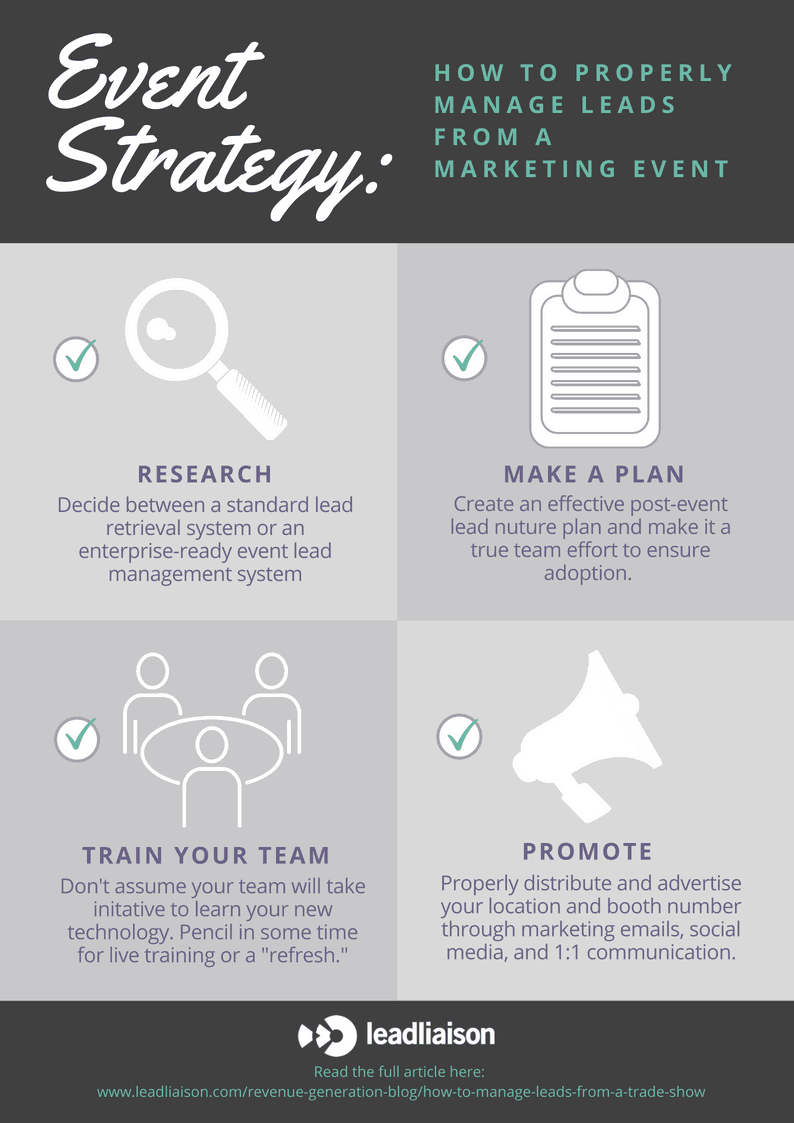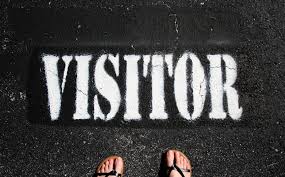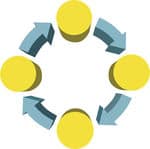Event Strategy: How to Properly Manage Leads from a Trade Show or Other Marketing Event
Want the executive summary? Download the infographic here.
To access our Event Lead Management Kit, which includes this resource, click here.
Does your company do marketing events, like trade shows or conferences? Whether you’re just dipping your toe into marketing events, or you’re a seasoned pro, it doesn’t hurt to learn more about how to perfect your event strategy. When preparing for an event, there are two main focuses: getting your “gear” ready for the show, and setting up a process for managing the leads you get from that marketing event. We’ll save the “gear” topic for another day…today we’re thinking about LEADS!
What do marketing and sales always have in common? The answer: leads (duh). Marketing teams generate leads, and sales teams pursue them. Marketing events, and the like (conferences, trade shows, etc.) are incredibly effective ways to generate leads. But there’s often a lot of prep work that goes into these events.
The first step in planning for a marketing event is to come up with an event strategy, which should include a well-thought-out lead management process. Without this, you risk losing a lot of potential leads – leads who have seen your booth, spoken with your sales rep, and shown real interest in your solution. What a waste that would be! Here’s our guide to coming up with the perfect lead management process as a part of your overall event strategy:
Do Your Research
Find an event lead management strategy that works best for your business. Do you prefer to just order a lead scanner and do the rest manually? Or, do you prefer to use a lead capture app that already integrates with the rest of your marketing and sales technology (ex: marketing automation platform and CRM)? We prefer to use our lead capture app, GoCapture!™, as it integrates seamlessly with our marketing automation platform and our CRM. We can easily connect the dots between our event-specific marketing campaigns and the end results. We can also customize our forms so that we capture all of the information that we want/need, and we have limitless options for lead capture (not just badge scanning!).
Map Out Your Lead Management Process
Meet with your team (marketing AND sales) and lay out a plan for how you wish to follow up with your leads. A quick text saying, “Thanks for stopping by our booth!” goes a long way – especially considering the amount of email follow-ups those folks will probably have the next morning. Are there any special offers or messages that you should incorporate into your follow-up? Get to the drawing board (quite literally, if you have to!) and map out how you will nurture those leads (your “nurture campaign”). Part of a thorough event strategy is making sure that everyone is on board and knows what kind of messaging that lead will receive.
Here are a few things you’ll want to consider, when laying out your post-event lead nurture:
- Determine the proper lead score for this event and incorporate that into your post-event lead nurture plan. Either manually, or automatically if you’ve got the technology, add that number to Prospects’ overall scores.
- Ensure proper lead distribution. Many marketing automation platforms will allow you to automate your lead distribution based on specific rules, or round-robin. Make sure everyone is on the same page about how those leads will be distributed so there is no confusion later.
- Incorporate omnichannel marketing in your nurture campaign. Sure, emails are great – of course those should be included. But text are powerful, postcards are unique, and handwritten letters give a personal touch.
- Set up your post-event nurture in your marketing automation platform prior to your event, so that once that lead is captured, it is automatically tagged, segmented, scored, and placed into an automation.
- Keep in mind that you can usually clone your nurtures (aka automations). Put the proper legwork into creating a killer nurture campaign, and then rest easy knowing you just have to edit a few minor things (like event name, etc.) next time around.
Train Your Team
Okay, now back to your event strategy: Don’t assume that your sales reps (or other team members attending the event) are up to date on lead capture technology. Although there will probably be some complaining, try to get your reps into a room to refresh them on the process or train them on new tech. If you are using an event lead management app, you can have your reps install it on their devices (or the company’s devices) ahead of time so they can get some real-life practice.
You want your sales team to be on board with your process. If they are not, you maby be less successful than you could be.
Ensure Attendance
More often than not, trade show organizers will provide an email list of people who plan to attend an event. Put some thought into your plan for encouraging attendance at your booth and start building those relationships early. Gone are the days when attendees just show up and wander around. With more and more millennials attending trade shows, conferences, and other live marketing events, we find that attendees are doing more research ahead of time so that they know who they want to visit and can plan accordingly.
Make it easy for them; properly distribute and advertise your location and booth number through marketing emails, social media, and 1:1 communication (like Lead Liaison’s Sales Enablement). And don’t forget to include past attendees in your communication (based on location).
In Summary
Marketing events can be costly, so it’s important to ensure you are getting the most out of it. Properly managing your leads is essential. Include team members from both sales and marketing through as much of the process as you can, so that everyone is on board with (and will follow through with their part of) “the plan.” Below is a quick graphic you can print out and stick on your desk, so that you’re ready for trade show season!




 Your organization just attended a big marketing event. There was a lot of planning that went into your organzation’s participation at this event. You spent lots of marketing dollars trying to make an impact, and hopefully creating a lot of leads. And it worked! Your onsite representatives collected tons of leads! You probably already know that your event follow-up is important, but did you know just how important it really is? And, how rare it is?!
Your organization just attended a big marketing event. There was a lot of planning that went into your organzation’s participation at this event. You spent lots of marketing dollars trying to make an impact, and hopefully creating a lot of leads. And it worked! Your onsite representatives collected tons of leads! You probably already know that your event follow-up is important, but did you know just how important it really is? And, how rare it is?!






